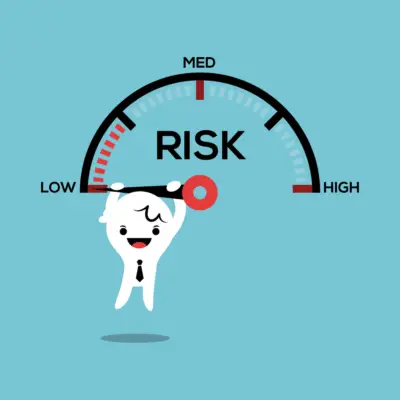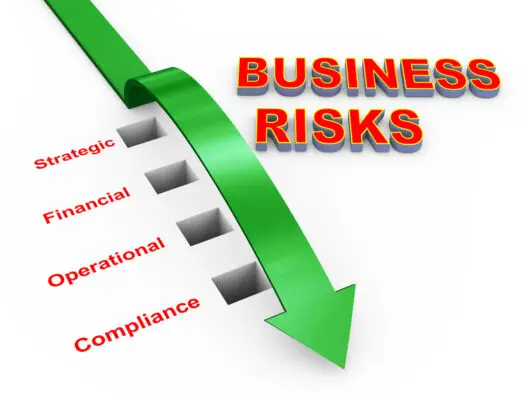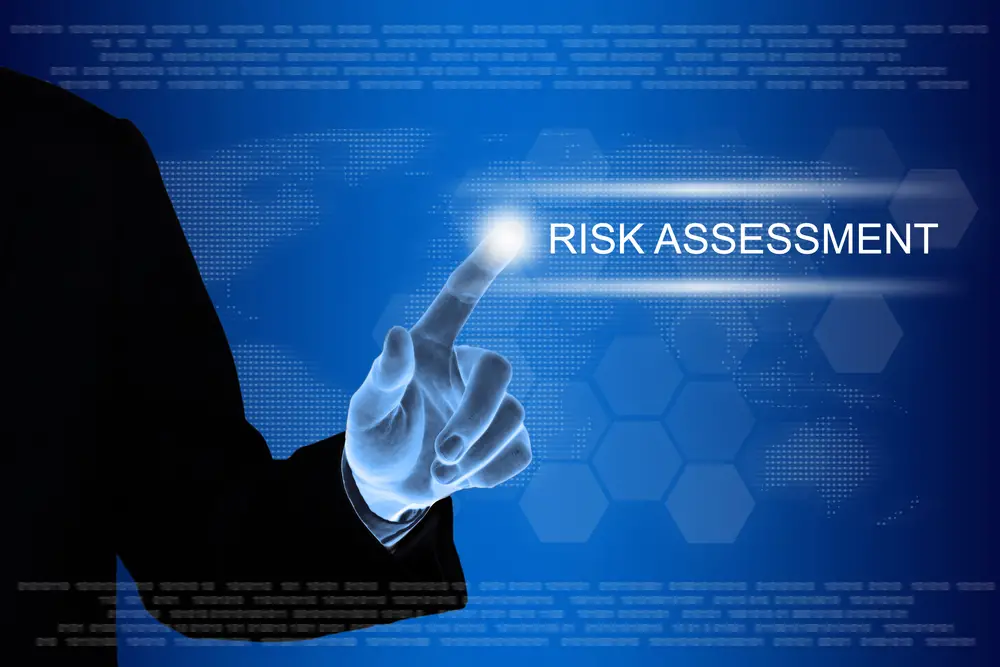Risk assessment is one of the most important steps you can take to safeguard a computerized system from all kinds of risks. In identifying potential risks and vulnerabilities, you can put measures in place to mitigate them before they have a chance to cause harm.
A computer system risk assessment is a process for identifying and evaluating security risks. It helps organizations determine which security controls are appropriate and effective for mitigating those risks. The goal is to protect information assets from unauthorized access, use, disclosure, or destruction.
There are many reasons why a computer system risk assessment is important. For one, it helps organizations comply with laws and regulations. Many industries have specific requirements for managing and protecting data. A risk assessment can help ensure that you’re taking the necessary steps to comply with these requirements.
Additionally, a risk assessment can help improve your organization’s overall security posture. This can help reduce the likelihood of a successful attack on your systems. Risk assessment is all part of organization risk management framewrk.
Finally, a risk assessment can also help save your organization money. By identifying risks upfront, you can avoid implementing costly controls that may not be necessary. Additionally, you can avoid the cost of downtime and reputation damage that can result from a successful attack.
How to Conduct a Computer System Risk Assessment process.
Step 1: Identify Your Assets
The first step in conducting a risk assessment is to identify your organization’s critical assets. These are the systems and data that are most important to your business operations. Keep in mind that not all assets will be stored on your computer systems— some may be paper records or even people (e.g., trade secrets or key personnel). Once you’ve identified your critical assets, you can begin assessing the risks they face.
Step 2: Identify Potential Threats
The next step is to identify potential threats to your assets. This includes external threats like hackers as well as internal threats like employees with malicious intent. For each threat, try to determine its likelihood of occurrence as well as the potential impact if it were to occur. This will help you prioritize which risks are most important to address.
Step 3: Evaluate Current Controls
Once you’ve identified the risks facing your assets, the next step is to evaluate the effectiveness of your current controls. This includes both technical controls like firewalls as well as non-technical controls like employee training.
For each control, try to determine its effectiveness at mitigating the risks it’s designed to address. This will help you identify any gaps in your security posture.
Step 4: Implement New Controls
Based on the results of your risk assessment, you may need to implement new controls. This could include anything from technical changes like installing new software patches to policy changes like restricting access to sensitive data.
Be sure to consider the cost of each control as well as its effectiveness at mitigating risk when making implementation decisions.
Step 5: Monitor and Repeat
The final step in conducting a risk assessment is to monitor your systems on an ongoing basis and repeat the process periodically. This will help ensure that your security posture stays up-to-date as new threats emerge and new technologies are introduced.
Additionally , by repeating the process on a regular basis, you can identify any areas where your controls are no longer effective and make necessary changes.
For successful use and maintenance of computer software, regulators, clinical, and computer technology specialists working within the biopharma industry need to retain the relevant knowledge and approaches to computer system validation.
In addition, FDA’s General Principle Validation allows manufacturers to use a critical risk-based approach to validation activities. They are particularly looking for events that could directly affect product safety: High hazard events.
Depending on how risky a software upgrade has on the software it is likely that the documentation will be highly dependent on the extent to which the change has impacted the system.
For example, The pharmaceutical industry utilizes computer software for instrument control and data analysis. FDA requires computer systems to undergo a documented verification procedure called computer system validation (CSV).
CSV provides an effective method by which computer systems can be tested and proven. The CSV provides forensic information to a regulator for regulatory compliance purposes to assure product safety and efficacy.
In this blog post, we’ll explore the importance of a computer system risk assessment and how to go about conducting one.

Understanding the Risks
Dictionary meanings for risk: situations in which you are exposed to the threat. In economics terminology, it is the danger of losing money. In general, we can divide risks into four main categories: zero or lower, medium or high.
Risk identification also involves understanding the risks of system vulnerabilities. While risks can not be quantified, they can be mathematically described as ” Risk = Threat Vulnerability x Asset”. When considering potential risks, an optimum strategy should be taken.
How does risk assessment work?
Risk assessment is a process used to identify potential hazards and analyze the likelihood and consequences of those hazards occurring. This information can then be used to determine the level of risk associated with a given situation and develop strategies for mitigating or managing that risk.
In the context of IT, risk assessment involves identifying potential threats to an organization’s digital systems and data, such as hacking or computer viruses, and assessing the potential impact on operations and finances.
From there, measures can be taken to minimize or eliminate those risks, such as implementing strong cyber security measures or regularly backing up important data. Overall, conducting regular risk assessments helps organizations stay prepared for any potential threats and minimize their negative consequences.
Carrying out an Audit of Controls
Controlling systems are usually of two types – first technical – which is encrypted software enabling user authentication, and detection of intrusions. The second is nontechnical and involves environmental and physical equipment, administrative controls, protection policies,
The control types may be further divided into a detective and preventive categories respectively. As its name suggests, the latter control categories help in monitoring the user’s history and in the detection and information of any attempt at hacking.
The prevention of attack using encryption prevents or stops potential aggressive attacks from occurring. Computer systems validation process mitigates the risk of data integrity and patient safety.
Identification and Prioritization of Assets
Assets may include servers, data disks, partner documentation, client contact, business secrets, or anything else of this sort. A list of valuable assets often requires consultation from every stakeholder.
When these are completed, they must then discuss and decide their relative importance. The resulting plan addresses the most critical aspects of the allocation of the budget to manage the risks. A formal risk assessment of all assets need to be undertaken.
Are Assets Worth The Attention? What do we need? Prioritizing must be accomplished in an objective way incorporating common standards such as value for assets impact, loss, and legal consequences.
Prioritization of Assessed Risks to Information Security
Give a risk rating for each threat pair or vulnerability based upon the above factors; upon this step, a risk matrix is strongly recommended. In addition, the values are allocated for the lowest, the middle, and highest chance of risk respectively.
In addition, impact levels for the low, medium, and higher impact levels are ranked in a range between 10 and 150. It is calculated by simply multiplying the two values and risk has also been classified as low, high, and middle based on the data collected.
Pinpointing your weaknesses
Defendants use weakness to secure your company or to attack your company. These are professional tools for identifying security vulnerabilities in systems. It is possible to increase digital resilience through periodic patches, updates, and testing.
Nevertheless, it is necessary to focus on possible bodily injuries. For example, putting servers at a higher level reduces physical security against floods.
Threat Impact Assessment
The analysis of the impact of the threats is a fundamental factor. The Impact Assessment may be done using existing information within organizations. In the context of BIA, the report describes the effect that loss of information can have on systems in quantitative or qualitative terms.
If an event occurs that may cause harm or is likely to cause damage to information and system integrity, it is essential to take proactive steps.
Controls suggested
You can now take all that you know and suggest the actions to take by senior management and others to mitigate risk. While choosing measures aimed at reducing risk levels, remember that when analyzing risks.
It should be possible to compare cost/profit/cost of operations, feasibility, and existing regulations and the reliability of the effect and efficiency of suggested activities are important factors to be considered for a validated system.
Ascertaining the Chances of Damage
Second, a detailed evaluation is needed to determine how likely the vulnerability is to have an attack. They should also consider weaknesses, competencies, motivations of the source of threat, and efficiencies in your control systems.
The chances could be given numerically or you could classify them as low, high, medium, or high – it depends upon you.

Threat identification
An intrusion aimed at stealing vital data from your system could create an unsatisfactory environment for your business. Other threats may exist, including viruses and malware.
Prioritizing Computer Systems Risks
Any company that uses computers to do business is at risk of a system outage. The first step in mitigating the risks is to prioritize them. Here’s how you can prioritize computer systems risks.
- Identify what’s critical. The first step is to identify which systems are critical for your business to function. These are the systems that, if they went down, would cause the greatest disruption to your business. This could include everything from your accounting system to your inventory management system.
- Categorize the risks. Once you’ve identified which systems are critical, you need to categorize the risks associated with each one. For example, you may have a system that’s critical for processing customer orders but it’s only at risk of going down if there’s a power outage. On the other hand, you may have a system that’s critical for processing payments but it’s at risk of going down if there’s a hacker attack or a software malfunction.
- Prioritize the risks. Now that you’ve identified and categorized the risks, you can prioritize them based on the likelihood of them occurring and the impact they would have on your business. For example, a power outage is less likely to occur than a hacker attack but it would have a greater impact on your business if it did occur because it would take longer to recover from.
- Put mitigation plans in place. Once you’ve prioritized the risks, you need to put mitigation plans in place for each one. This could involve everything from having backup generators for power outages to having insurance for data breaches.
Software updates and modifications are essential to ensure the system remains functional. Some software changes do require full validation.
Identify the types of changes to your QMS if you want to avoid changing how your system works and provide documentation of these changes on your QMS for your organization.
Creating a Computer Systems Risk Assessment Plan
This plan will help you identify potential risks and vulnerabilities so that you can take steps to mitigate them.
- Identify Assets: The first step in creating your risk assessment plan is to identify all of the assets that you need to protect. This includes hardware, software, data, and people. You should also consider the value of each asset and how critical it is to your business operations.
- Identify Threats: Once you have identified your assets, you need to identify the potential threats that could impact them. These threats can come from both internal and external sources. internal threats may include employee error or malicious insiders, while external threats may include hackers or natural disasters.
- Identify Vulnerabilities: Once you have identified the threats that could impact your assets, you need to identify the vulnerabilities that could be exploited by those threats. For each asset, you should consider what would happen if it was lost or compromised. This will help you determine which vulnerabilities are most critical to address.
- Mitigation Strategies: Once you have identified the risks and vulnerabilities, you need to develop mitigation strategies to minimize the impact of those risks. This includes developing backup and disaster recovery plans, implementing security controls, and establishing incident response procedures.
Conclusion
Until recently, everything was moving digitally. As data becomes binary, it increases exponentially, the security issue comes. It consists of identifying risks, administering measures, and preventing gaps. When trying to protect the best interest of the firm, the risk must either be understood by yourself or by someone who is doing it for you.
As you can see, computer system risk assessment is vital to ensuring the safety and security of your organization. By taking the time to understand the risks that are involved in using technology, you can make informed decisions about how to protect your business.
With a well-thought-out plan in place, you can avoid potential disasters and keep your business running smoothly. Do you have a risk assessment plan in place for your computer systems?.

Chris Ekai is a Risk Management expert with over 10 years of experience in the field. He has a Master’s(MSc) degree in Risk Management from University of Portsmouth and is a CPA and Finance professional. He currently works as a Content Manager at Risk Publishing, writing about Enterprise Risk Management, Business Continuity Management and Project Management.

